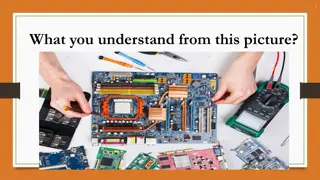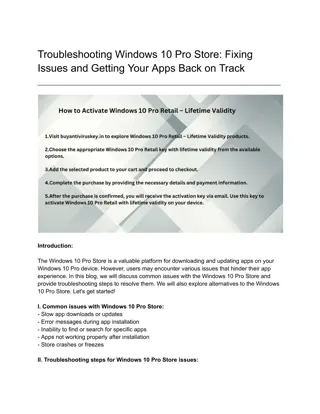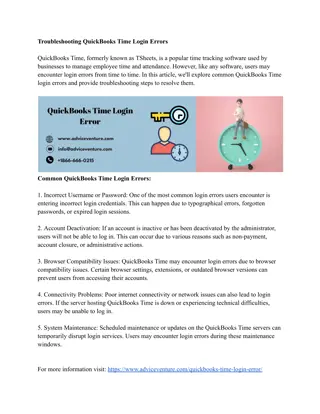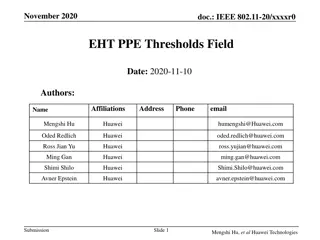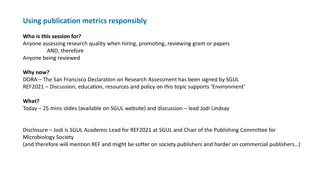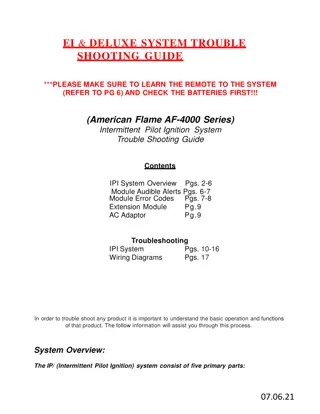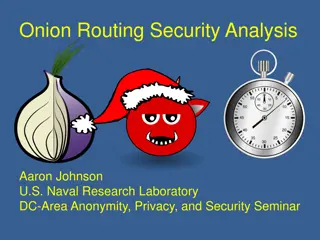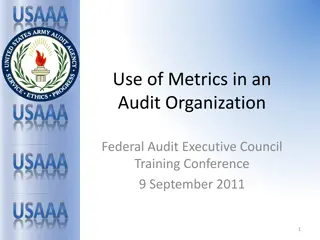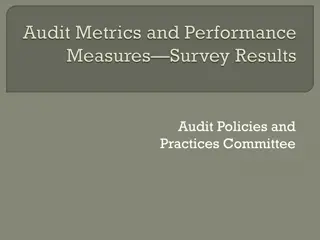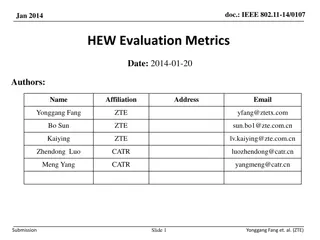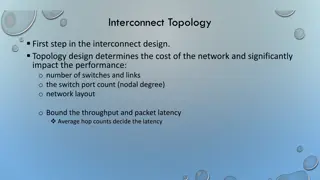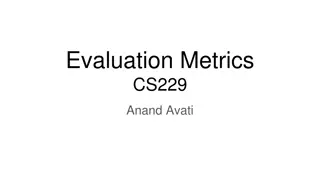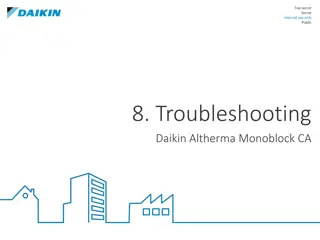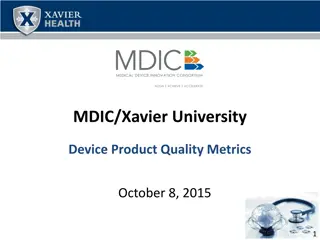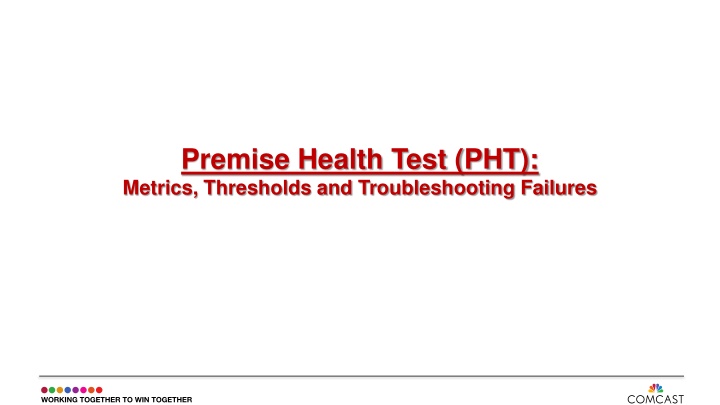
Troubleshooting Premise Health Test Metrics and Thresholds
Explore the metrics, thresholds, and troubleshooting failures of Premise Health Test (PHT) covering upstream and downstream channels testing, device failures, Us Tx levels, partial bonding, and Flux ICFR insights. Learn how failures are determined and resolved for optimal network performance.
Download Presentation

Please find below an Image/Link to download the presentation.
The content on the website is provided AS IS for your information and personal use only. It may not be sold, licensed, or shared on other websites without obtaining consent from the author. If you encounter any issues during the download, it is possible that the publisher has removed the file from their server.
You are allowed to download the files provided on this website for personal or commercial use, subject to the condition that they are used lawfully. All files are the property of their respective owners.
The content on the website is provided AS IS for your information and personal use only. It may not be sold, licensed, or shared on other websites without obtaining consent from the author.
E N D
Presentation Transcript
Premise Health Test (PHT): Metrics, Thresholds and Troubleshooting Failures
PHT Metrics and Thresholds All Upstream (Us) and Downstream (Ds) channels will be tested for each device on a customers account Any Us or Ds channel failure for any metric on any device will result in test failure SpectraCM FBC impairments and/or subpar MoCA PHY rates on any device will result in test failure Active DOCSIS devices on a customer s account that are Unrecognized by the CMTS will result in a Warning. Devices that should be active but are unresponsive will result in a Failure. All failures must be fixed before leaving the customer premise Open NWT node events will be cross referenced to override test failures when applicable
PHT Metrics: Actual Us Tx The maximum Us Tx level for a DOCSIS device depends on how many Us channels the device is using for Us bonding. A growing number of devices in our network have Upstream Extended Transmit (UET) capabilities and can transmit 3 dBmV higher than the initial DOCSIS 3.0 specification allowed. If a Device is transmitting at maximum power and still cannot reach the CMTS at the requested input level, generally 0 dBmV, it is in a state called compression. Compression limits the devices equalization abilities and forces constant power adjustment requests from the CMTS. This is where Actual Us Tx comes in Actual Us Tx is the level a device is transmitting at, or would need to transmit at in order to reach the CMTS at the proper input level. If a device is not in compression the Actual Us Tx is the current transmit level. When a device is in compression the Actual Us Tx is calculated as the current transmit level plus the absolute value of the CMTS Rx Level for that channel. For example if a device is transmitting at 51 dBmV and the CMTS Rx is -3.5 dBmV then the Actual Us Tx will be 51 + 3.5 = 54.5 dBmV and results in a failed test.
PHT Metrics: Partial Bonding DOCSIS 3.0 devices have the ability to send and receive data transmissions across multiple Us and Ds channels, this is called bonding . If any Us or Ds channel(s) becomes impaired the Device will stop utilizing them to send or receive data, this is called partial bonding . Devices running in partial bonding mode indicate current or past impairments on the channel(s) that are no longer being utilized. Customers with devices in partial bonding mode may not get the speeds they are paying for and may also contribute to node level capacity issues affecting speeds for the entire node. Partial mode devices are identified by the DOCSIS 3 registration state for each channel. A registration state of 4 on any channel indicates that the device is utilizing that channel for data transmissions. A registration state of 1,2,3 or 5 on any channel indicates that a device is not utilizing those channels and is in partial bonding mode. Sample response from a device that is in Us partial bonding mode resulting in a failed test
PHT Metrics: Flux ICFR The In-Channel frequency response (ICFR) of our Us QAMs gives us insight into impairments in the Us path that we are often otherwise blind to. Over the years using complex algorithms we have fine tuned ways to delineate between customer premise and HFC network related issues. Devices that display ICFR issues on any Us channel that are localized to the customer premise indicate integrity problems within the home and/or soft drop cabling. Things as simple as loose connectors can result in ICFR issues and if left unchecked loose connections can become an ingress/noise source affecting the performance of not only that individual customer, but the whole node area. Example of a high ICFR due to a premise issue resulting in a test failure.
PHT Metrics: Ds Rx and Ds SNR Ds Rx and Ds SNR are key metrics used to determine the health of our DOCSIS carriers at the input of our devices. Low levels in either category can result in performance issues that impact our customers. Though low Ds SNR is often found to be related to low DS Rx levels these issues often occur separately as shown in the examples below. One device has low Ds SNR levels on 4 out of the 8 DS channels it is bonding across with good Ds Rx levels and the other device has very low Ds Rx levels on all channels with good Ds SNR levels. Both resulting in a test failure. While there is no upper failure limit for Ds SNR, high Ds Rx levels can also be harmful to our devices. If Ds Rx levels are too high it can overload the front end of the device and cause performance issues. In the example below the device has very high Ds Rx levels and would also result in a test failure.
PHT Metrics: SpectraCM FBC Impairments Until recently we have solely relied on our DOCSIS channels to infer the Ds performance of our network. Now with Full Band Capture (FBC) capabilities available on almost 50% of our DOCSIS devices we have an unprecedented view of the entire Ds spectrum at the input of our devices. This has given us the ability to identify frequency specific issues in the Ds spectrum that we were previously blind to. Many of these impairments are caused by issues in the customer premise and/or soft drop cabling and can be localized to the customer premise. Any impairment, other than Adjacent Channel Power (ACP), detected on the live poll of FBC capable devices will result in test failure if they are not part of a known HFC network event in NWT. Impaired video channels DOCSIS channels no issues
PHT Metrics: MoCA PHY Rates Multimedia over Coax Alliance (MoCA) allows us to offer multi-room services such as AnyRoom DVR . MoCA PHY Rate is the actual physical layer bit rate (Mbps) of data transmitted between nodes in a MoCA network. A lower MoCA PHY Rate is an indicator of subpar performance and can be caused by high path loss, home amplifiers, splitters, etc. Accounts that have MoCA services will be will be tested for PHY Rate performance. Any PHY rates below 200 Mbps will result in a test failure.
PHT failures and NWT node event override There are some cases where PHT will fail because certain metrics are out of threshold due to a HFC network issue. During the PHT test we also pull in all open NWT events on the customers node. If any metric fails, we cross reference it with the open HFC events. If the event is open for the metric that fails we then make sure that the customer is part of or in very close proximity to the event. If all criteria is met we will override the failure. You can see in the example below this customer failed PHT for low Ds Rx, but they are part of an open NWT event for Ds Rx so the failure is overridden. If the other metrics not associated with the NWT event fail as well the failure will be upheld and the technician will be responsible to repair those in-home issues to pass the test.
PHT Troubleshooting Tips Though we do our best to delineate between in-house and network issues to ensure all failures can be repaired at the customer premise, we are not always 100% accurate. Here are some troubleshooting tips to help isolate the in-home problems that are contributing to your PHT failure or help identify a HFC network issue that will require and RTM.

